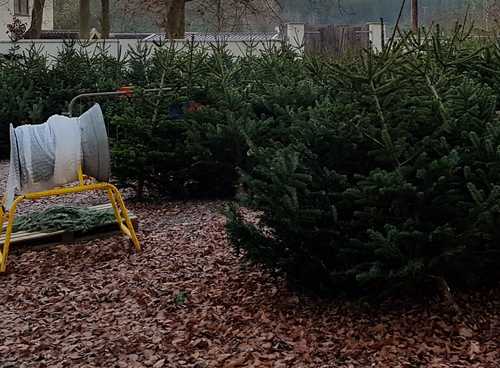Some Festive Christmas Trees Trivia!
Christmas is just around the corner. Time to dig out those decorations from the loft, unfurl those tangled up lights, and start moving furniture around to make room for the annual festive centrepiece—the Christmas tree.
Whether it’s a plastic imitation, or the real deal, Christmas trees have become synonymous with the holiday season, and no household would be complete without one.
So, pour yourself a mug of mulled wine, stock up on firewood for a cosy evening at home, and read some amazing trivia about the humble Christmas tree.

Fun facts!
Let’s start the ball rolling with a festive, Christmas tree-themed dose of fun facts
Did you know that, according to the British Christmas Tree Growers Association, between eight and ten million Christmas trees are sold in the UK every year?
While the vast majority of those are sourced from growing farms in the UK, at least one million are imported from countries around Europe—most notably Denmark!
A traditional pine tree can take up to 5 years to grow; while its arboreal cousins, the spruce and noble fir, can take 7 years and 10 years respectively. Good things come to those who wait!
If it’s environmental credentials you want, did you know that with just an acre of Christmas trees, you can provide enough daily oxygen for 18 people?

All roads lead to Rome...
Evergreens have been the go-to choice for Christmas trees for centuries, and it’s the Ancient Romans who we have to thank for this time-honoured tradition. Indeed, during the Roman pagan festival of Saturnalia, celebrated in December, temples were decorated with the wreaths, candles and evergreen trees to praise the Gods during the winter sowing season.
A thank you from Norway!
Anyone who has visited Central London during the festive period won’t fail to have noticed the rather large Christmas tree that resides in Trafalgar Square. What you might not have realised is that this arboreal tradition is a thank you gift from our friends in Norway.
Each and every year, since 1947, the residents of Oslo have handpicked a 50- to 60-year-old spruce tree to fell and ship to London—to show gratitude for England’s support during the Second World War.
Don’t be fooled by an Australian Christmas tree!
What Austrlians call a ‘Christmas tree’ is actually a highly aggressive, hemiparasitic type of mistletoe. The parasite is thought to be the largest on the planet, with a root system sprawling over 360 feet. Not something you’d want in your living room!

A very Victorian Christmas...
While the Church’s stern attitude towards Christmas trees began to thaw during the early 1800s, it wasn't until a famous 1848 sketch of Queen Victoria and the royal family, standing beside a traditional evergreen, that they became truly associated with the festive period.
Growing up with a German mother, evergreens were a common feature of Christmas celebrations, and as a child, Victoria would decorate the tree with oranges, cloves and cinnamon sticks. Talking of which—how’s that mulled wine coming along?
Use, reuse, recycle
When the decorations finally come down, and the Christmas holidays are done for another year—it’s time to start thinking about what to do with your unwanted tree.
Of course there are a myriad of ways to recycle our festive firs—they can be turned into mulch, compost or wood chippings.
Old Christmas trees can be buried to prevent soil erosion, submerged in bodies of water to create a sanctuary for fish, or shredded and dispersed on hiking paths to make the ground stable. There are also initiatives out there which allow you to rent potted trees. After the holidays, they can be returned, re-planted and reused the following year.
Remember, a tree isn’t just for this Christmas!
Finally... On behalf of the whole team here at Fountain Timber, we’d like to wish all our customers and their families a Merry Christmas and a happy, prosperous New Year.
Posted on December 13th 2021

